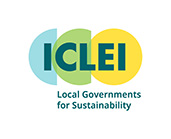
" style="float: right; margin: 0px 0px 15px 15px; width: 250px;">
Starting district heating in existing cities and developments
District heating is a system that delivers space heating and hot water to multiple customers through a pipe network. The heat can be produced at a central plant or at multiple locations, using different fuels, including renewable energy and waste heat. District heating is hence technology-neutral or -agnostic. By replacing individual boilers in each building, the district heating system can deliver economies of scale.
This Solution supports local governments in planning for and implementing new district heating networks in existing urban areas, especially those with high heat demand density, mixed use buildings with diverse consumer types and loads, pre-existing buildings with central heating systems (particularly where the buildings’ boilers are reaching the end of their useful life) and planned redevelopments such as building renovation or roadworks for new utility installation. This Solution is most relevant for cities without district heating or with very low shares of district heating, however its recommendations are still relevant for cities with higher shares.
This Solution describes the process of identifying and supporting a district heating demonstration project. The Solution also recommends actions, policies and regulations to enable district heating expansion and encourage additional district heating development in the city, showcasing the crucial roles to delivering district heating projects. The policy options available to cities are often influenced by national frameworks and local governments mandates. This Solution outlines the best practices that local governments can take within their usual mandates and roles, which should take into account the diversity of national frameworks.






